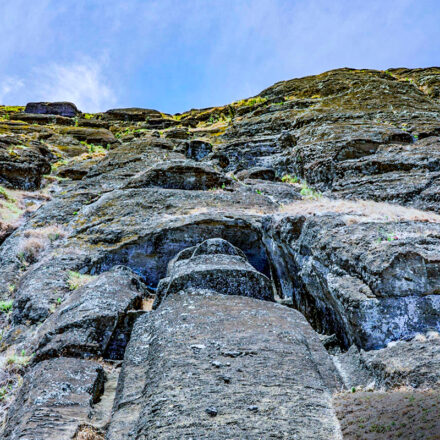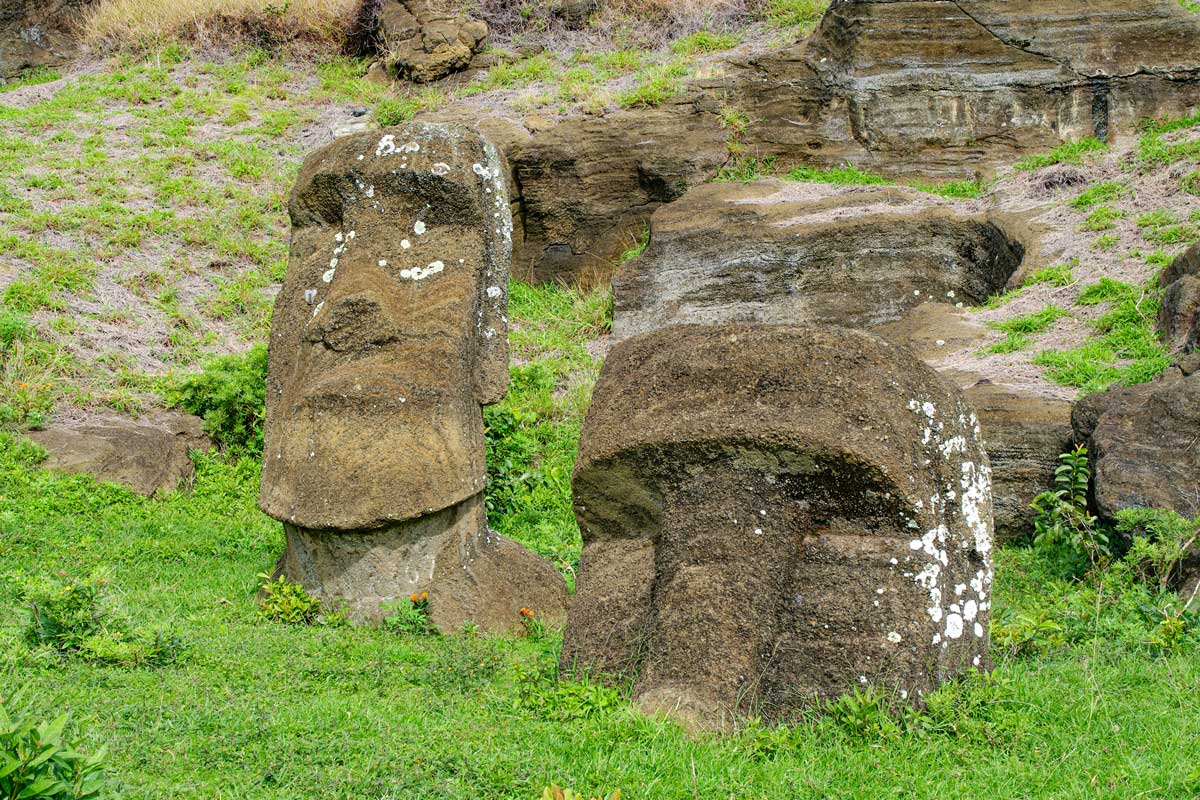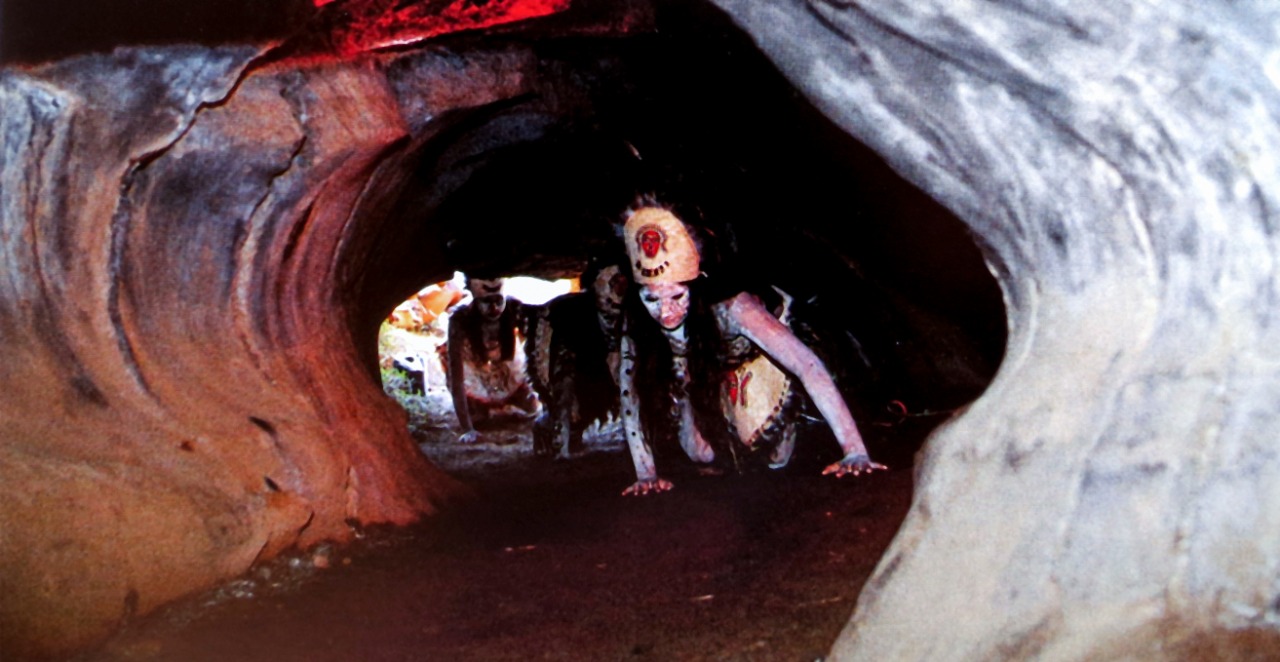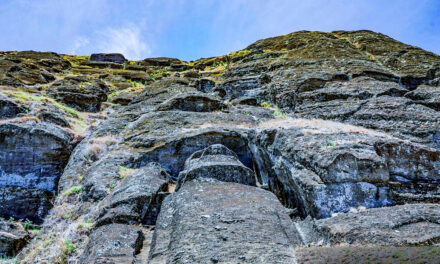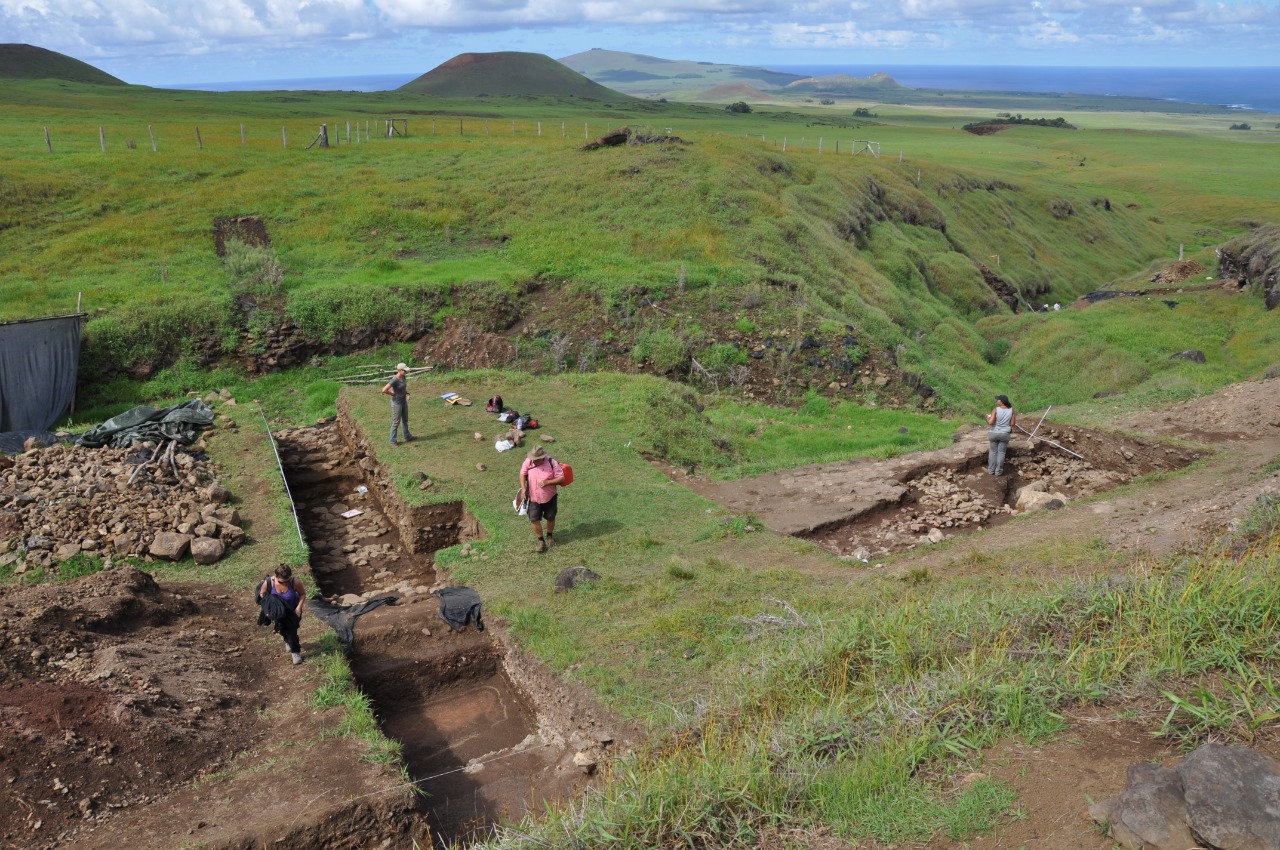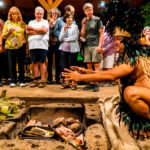The Failure of the Moai



Clearly there was an ecological crisis, but it didn’t necessarily cause the destruction of the platforms or the overthrow of the statues. It did, however, mean the end of megalithic construction, the production of the giant statues. No new Ahu-Moai (platforms with statues) were made after the 18th Century. Those statues which were left in the quarry of Rano Raraku don’t seem to have been intended for platforms, but possibly were being made to convert the extinct volcano into a new sacred center, perhaps as part of the cult of the “Bird-Man” which lasted for 200 years, from approximately 1680 until the arrival of the Christian missionaries in 1864. The proof is in the different styles that characterize the giants distributed throughout the Island and those which remained in the quarry, the appearance of cave painting, essentially in the service of the god Make-Make, and the development of the ritual of Tangata Manu, or bird-man.
The big question still remains : What really happened that the production of the Moai stopped seemingly from one day to the next and was then slowly replaced with a cultural and religious change?


Great devastation could have occurred. The report from the 1975 Spanish speleological expedition, “Operacion Rapa Nui”, confirms that Rano Aroi could have erupted in the 4th Century. Oscar González Ferrán, a geologist from the Universidad de Chile, claims that only some of the ruins belong to the period of tribal wars while others are a consequence of giant tsunami waves.
It seems that Uoke did his job well and the tribal wars helped him along. The result is that the Moai didn’t fulfill their destiny to protect Rapa Nui… they failed and they fell.

Featured Reports:
Archaeologists’ Tales
Archaeology is the branch of anthropology that aims to reconstruct the history of humanity from its material remains. The problem is that a very important part of human creation is not expressed in material form, and, on the other hand, many times it is not possible...
Rano Raraku, New excavations in Easter Island’s Moai quarry
The new excavations carried out in Rano Raraku, the moais quarry, leave us an enormous archaeological wealth and vestiges on the Rapa Nui culture.
Ana Hue Neru
Ana Hue NeruThe Caverns to whiten the YoungLas Cavernas para blanquear a Jóvenes As far back as the late 19th Century, various expeditions have attempted to unravel the mysteries of the Rapanui culture through archaeological research and the oral traditions of the...

